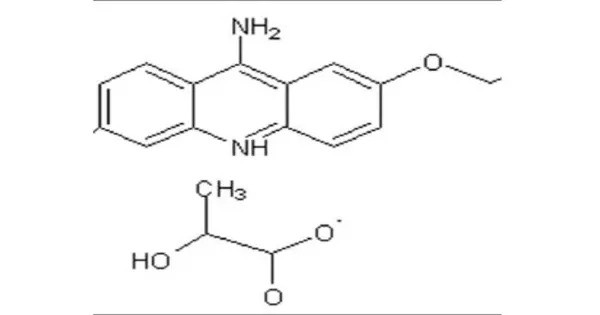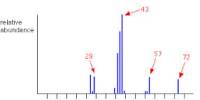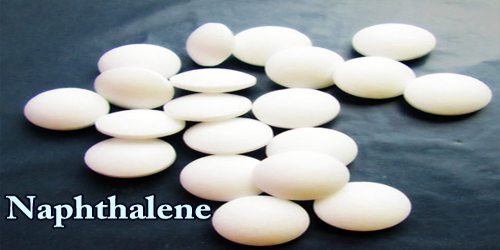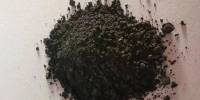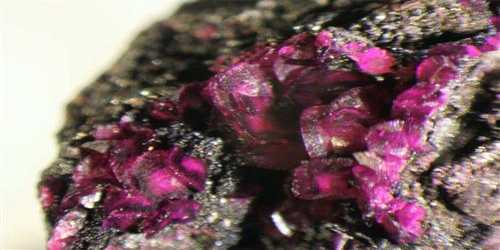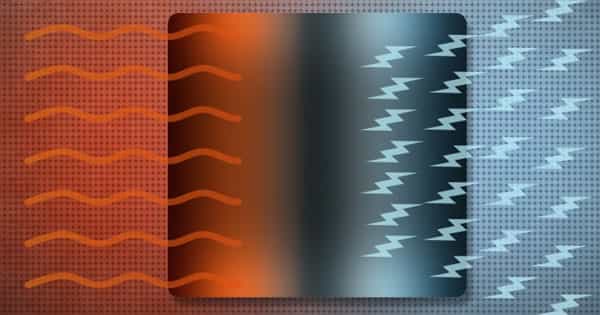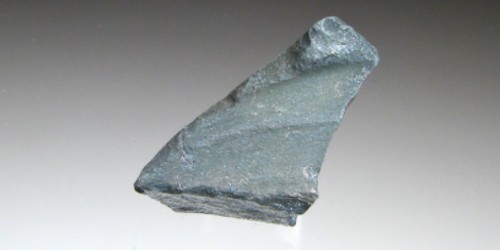Ethacridine lactate (ethacridine monolactate monohydrate, acrinol, trade name Rivanol) is an aromatic organic compound based on acridine. is a compound that is primarily used as a disinfectant and antiseptic. Its formal name is 2-ethoxy-6,9-diaminoacridine monolactate monohydrate. It forms orange-yellow crystals with a melting point of 226 °C and it has a stinging smell. It is a derivative of acridine, a nitrogen-containing compound.
Ethacridine Lactate has a variety of medical applications, but one of its most notable uses is as a local antiseptic. It has been used in the treatment of certain infections, particularly for its ability to kill bacteria. Its primary use is as an antiseptic in solutions of 0.1%. It is effective against mostly Gram-positive bacteria, such as Streptococci and Staphylococci, but ineffective against Gram-negative bacteria such as Pseudomonas aeruginosa.
Properties
- Chemical Structure: Ethacridine lactate is the lactate salt of ethacridine, a member of the acridine group. Its molecular formula is C15H14N2O3·C3H6O3.
- Physical Form: It is typically found as a yellow to orange crystalline powder or as a solution in water (when dissolved).
- Solubility: It is soluble in water and alcohol but poorly soluble in most organic solvents.
- pH: It tends to be slightly acidic in solution due to the presence of the lactate.
- Antiseptic Action: Ethacridine lactate possesses antiseptic properties and is known for its antimicrobial activity against a wide range of bacteria. It can be used to treat wound infections and other topical bacterial infections.
- Antifungal and Antiviral Properties: In addition to its antibacterial properties, ethacridine lactate has also been shown to possess some antifungal and antiviral effects.
Occurrences
Ethacridine lactate is not found naturally in organisms but is instead synthesized in laboratories for medicinal use.
Applications
In addition to its use in infection management, Ethacridine Lactate has been used in some other medical contexts:
- Infectious diseases: It’s sometimes used for topical infections due to its antibacterial properties.
- Inducing abortion: Historically, Ethacridine Lactate was used for inducing abortion in certain settings, particularly in the earlier stages of pregnancy.
- Wound care: It has also been used in wound care as a disinfectant to prevent infection.
The compound is often used in hospitals or healthcare settings for its antiseptic properties. It’s important to note that the use of Ethacridine Lactate, like other medical agents, should only be done under medical supervision due to its potential side effects and risks.
Ethacridine is also used as an agent for second trimester abortion. Up to 150 ml of a 0.1% solution is instilled extra-amniotically using a foley catheter. After 20 to 40 hours, ‘mini labor’ ensues. In China, an intra-amniotic method has also been used. Ethacridine as an abortifacient is found to be safer and better tolerated than 20% hypertonic saline.
Toxicity
It is considered to have low toxicity when used topically, but like many antiseptics, it can cause skin irritation in some individuals.
